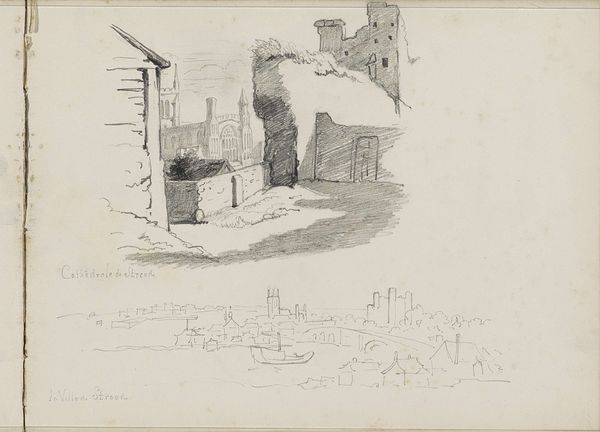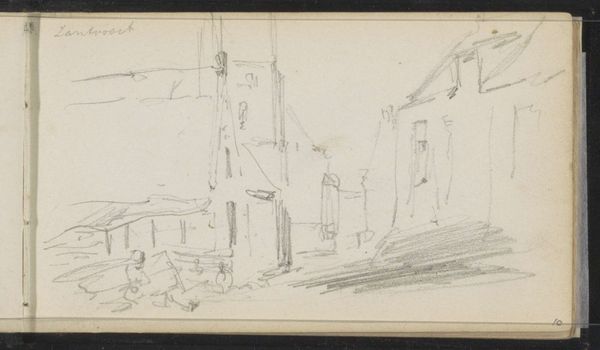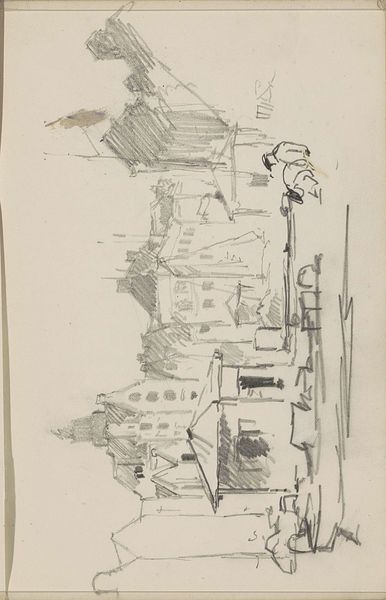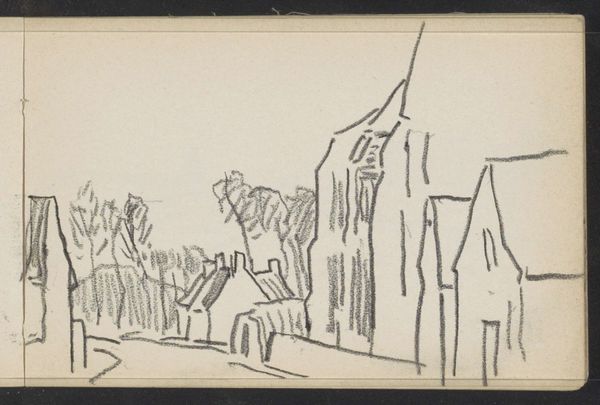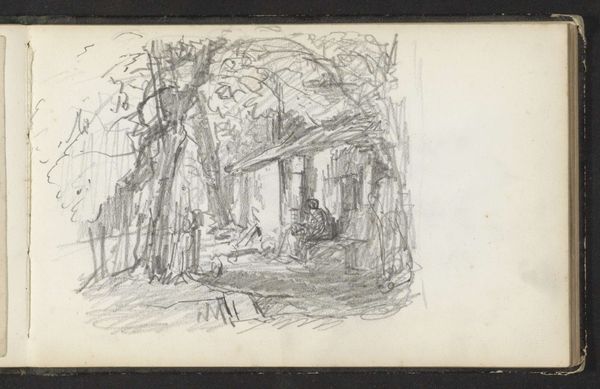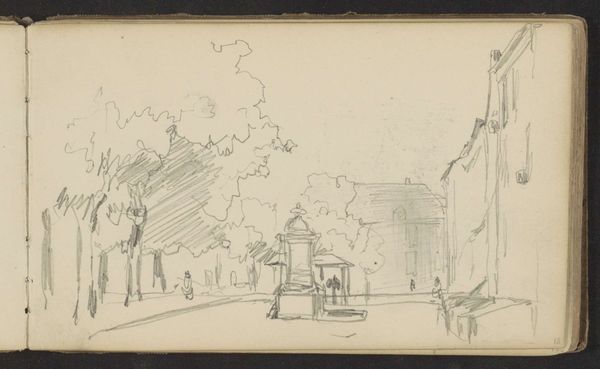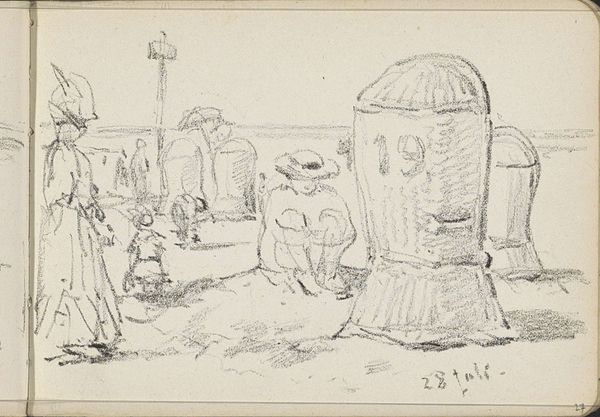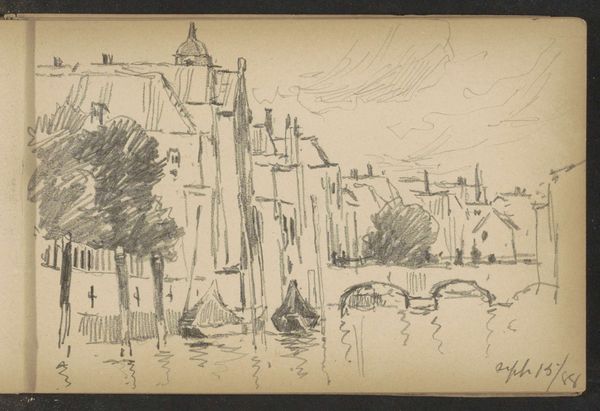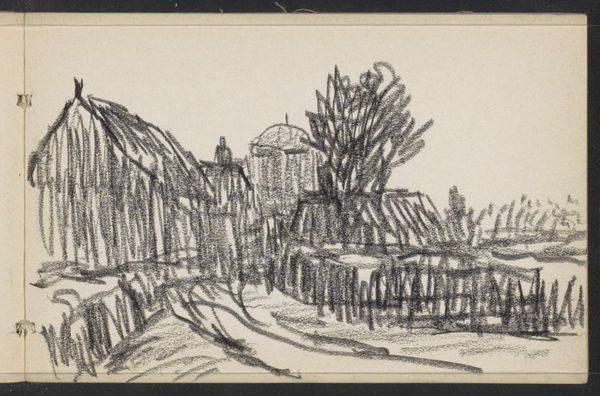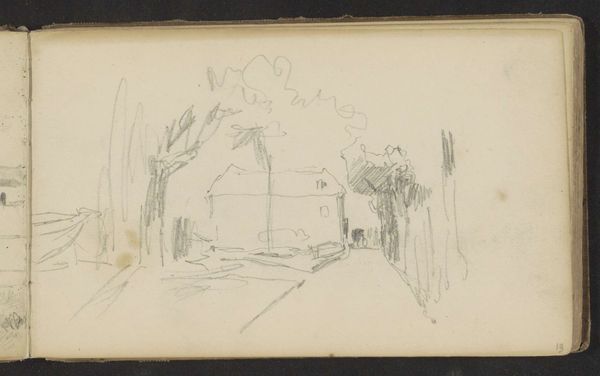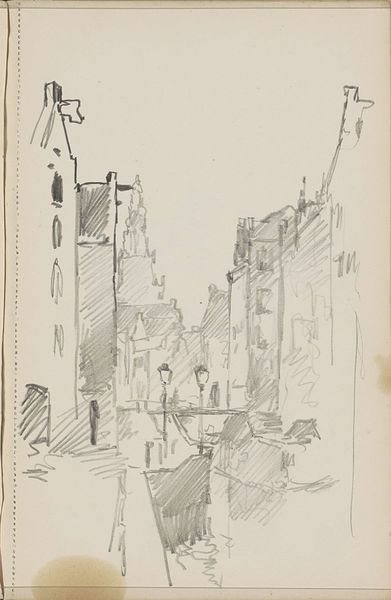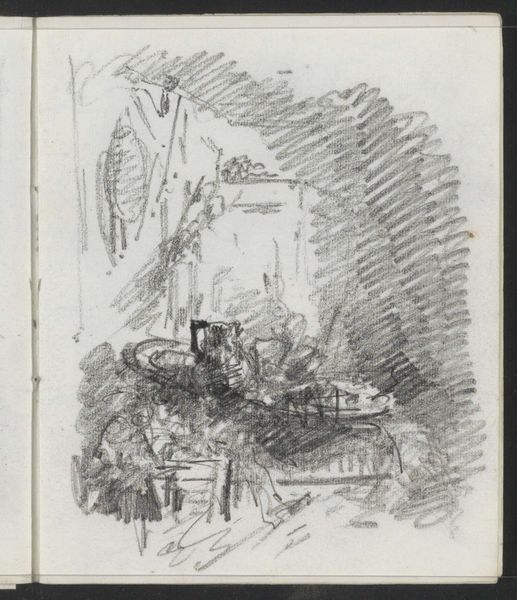
Dimensions: height 115 mm, width 160 mm
Copyright: Rijks Museum: Open Domain
Curator: Willem Cornelis Rip created this piece, "Huifkar op een Straat," sometime between 1914 and 1916, using pencil and pen on paper. It's a quick impression of a city scene. What's your first take? Editor: It feels fleeting, like a memory fading at the edges. The sketchiness imparts a dreamlike quality. There’s a strong reliance on diagonals creating this sense of movement—are we to think of the constant flux and flow of life in urban spaces? Curator: Possibly, given the historical context. Early 20th-century art grappled intensely with the changing social fabric. Industrialization brought rural populations into the city, leading to new socio-economic divides. Do you find that the marks evoke particular emotions, or do they create meaning in other ways? Editor: I’m drawn to the symbol of the carriage itself, a mode of transport being phased out by this period yet present here. What did carriages signify then, in this time of transition? It represents the past, and possibly class division, when contrasted against the electric lampposts in the background. It creates a stark juxtaposition between tradition and modernity. Curator: That's insightful. These contrasts do make one wonder about the artist’s intentions, or perhaps the socio-economic anxieties being registered unconsciously on paper. This being a sketchbook piece, one could see this less as a formal statement and more of a spontaneous record. What do you think? Editor: That seems valid. I’m struck by how even with minimal lines, Rip managed to capture a sense of depth. The layering of sketched figures builds an intimate, vibrant scene—like peeking into another’s consciousness. It reminds us that sketchbooks serve as windows into the artist’s world. Curator: And into ours, through the visual traces that linger. It reminds us that even rapid impressions carry traces of deeper anxieties and societal transformations. Editor: It certainly reframes how we understand historical artifacts; sometimes, it's not what's there but how it's shown.
Comments
No comments
Be the first to comment and join the conversation on the ultimate creative platform.
